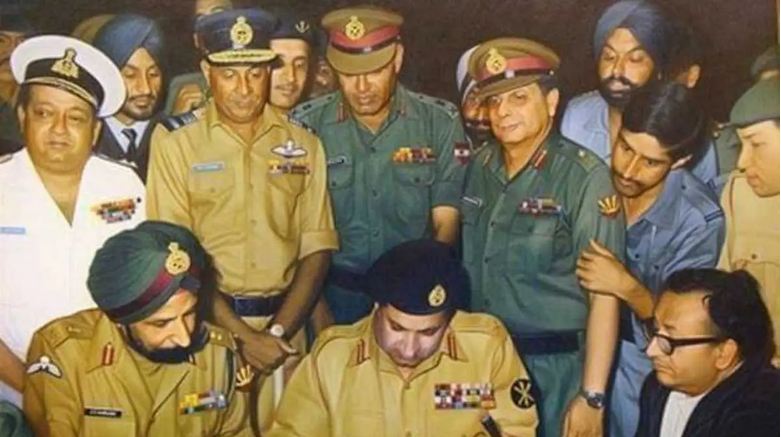It is exactly 50 years since India won the 1971 Bangladesh Liberation war. An incredible war effort by the Indian armed forces saw the war end in a matter of just 13 days, with 93,000 Pakistan Army and soldiers surrendering before the Indian Army and Bangladesh getting liberated.
But who were the men who made this heroic war effort possible? Field Marshal Sam Manekshaw was, of course, the one leading the Indian Army at the time, but two officers led from the front to mastermind the fall of Dhaka. We are talking about Lieutenant General J.F.R. Jacob and Lieutenant General Sagat Singh Rathore.
How J.F.R. Jacob made the fall of Dhaka possible:
During the 1971 war, then Indian Army chief SHFJ “Sam” Manekshaw wanted his soldiers to invade East Pakistan (now Bangladesh) and take control of towns like Chittagong and Khulna. Some Indian Army officers however were not very confident about this plan.
It was at this juncture that Lieutenant General J.F.R. Jacob, then Chief of Staff of the Indian Army’s Eastern Command, came up with a brilliant idea that would make the invasion of East Pakistan possible. Known as the “war of movement” plan, Jacob decided to capture all of East Pakistan, but towns in the way were avoided and secondary routes were used to reach the ultimate target- Dhaka.
J.F.R. Jacob was the one who got a surrender from Niazi:
The Pakistan Army failed to outguess what the Indian Army was up to, and in a matter of 15 days, the incursion of Dhaka was completed successfully. Then, on December 16, 1971, Jacob was sent to receive the surrender from Pakistani Army commander, Lt. General A. A. K. Niazi.
How Pakistani army surrendered to Lieutenant General J.F.R. Jacob is an amazing anecdote in itself. He went unarmed and was accompanied by only one staff officer, carrying just the draft surrender document. Jacob handed the surrender document to Niazi and told him that he had just 30 minutes to decide. A helpless Niazi had to accept the conditions of the surrender, effectively bringing the 1971 war to an end.
Jacob later reminisced having “hitched a ride in a truck”, on his way back after getting the surrender from Niazi.
Pakistan’s National Defence College too acknowledged Jacob’s brilliance. In a study, it wrote that the credit of the victory “really goes to General Jacob’s meticulous preparations in the Indian eastern command and to the implementation by his Corps commanders”.
Sagat Singh Rathore- the man who pulverised Pakistan’s defences:
Lieutenant Sagat Singh Rathore was an extraordinary Army officer. He had the unique distinction of taking part in three big wars/ battles- the Nathu La battle against the Chinese in 1967, the Goa Liberation campaign against the Portuguese in the year 1961 and the Bangladesh Liberation War in the year 1971. And guess what? Sagat Singh Rathore defeated his enemy every single time.
During the war, Lieutenant General Sagat Singh Rathore attacked then East Pakistan from the Agartala sector and continued to move forward with his soldiers.
Under his leadership, the Indian Army executed its first heliborne special operation with a small team of 10 Mi-4 helicopters led by Group Captain Chandan Singh. With this, India won the Battle of Sylhet and tied down the enemy forces in the East Pakistani town.
Lieutenant General Sagat Singh Rathore’s indomitable spirit and inspiring leadership helped the Indian Army upload an entire brigade across the four kilometres wide Meghna river and move deeper into what was then known as East Pakistan. Ultimately, Rathore’s leadership played a big role in helping India win the big war and capture Dhaka. What happened thereafter is a memory cherished by every single Indian across the country.
As we celebrate the 50th anniversary of India’s victory in the 1971 war, it is men like Lieutenant General J.F.R Jacob and Lieutenant General Sagat Singh Rathore, who deserve a major chunk of the credit for making it possible.
